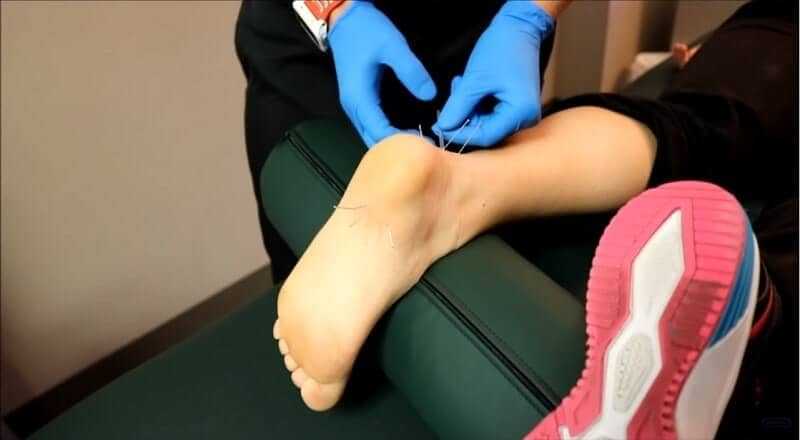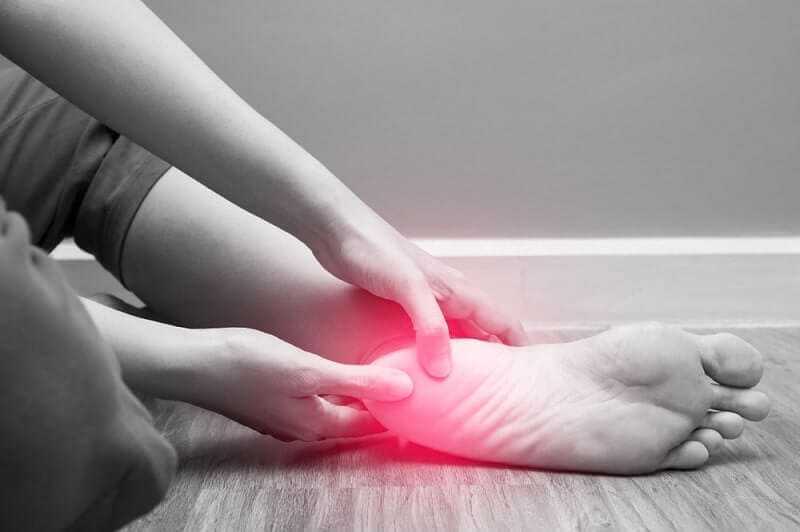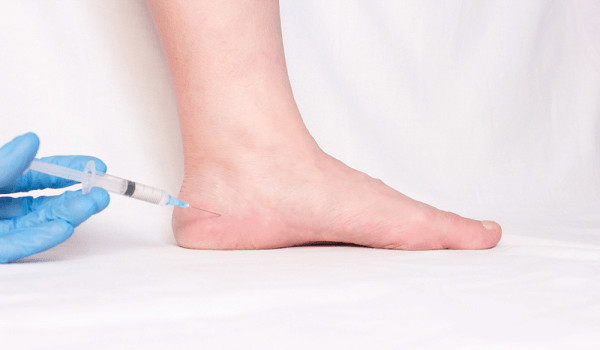Why do i have Heel Pain ?
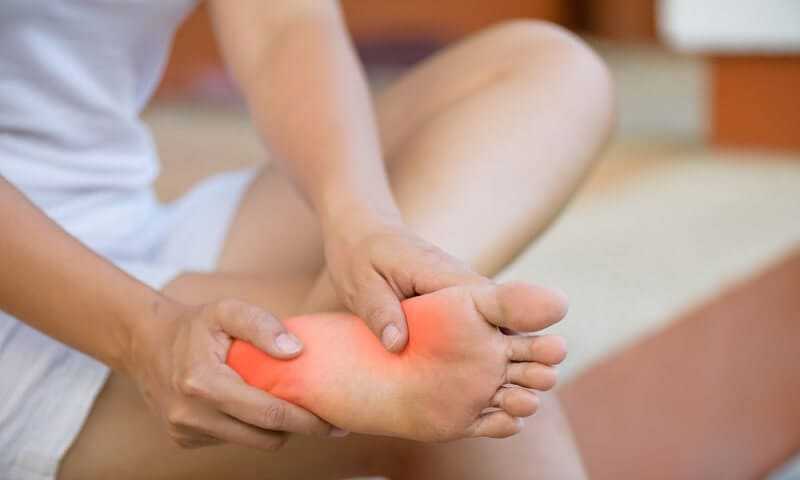
1. Plantar Fasciitis
Plantar fasciitis is the most common cause of heel pain. This condition is simply inflammation of the plantar fascia, a strong strap-like tissue divided into three bands found on the bottom of the foot. This tissue begins attached to the heel bone, and runs the length of the foot to the bottom of the toe bases. The plantar fascia can become injured due to a variety of reasons.
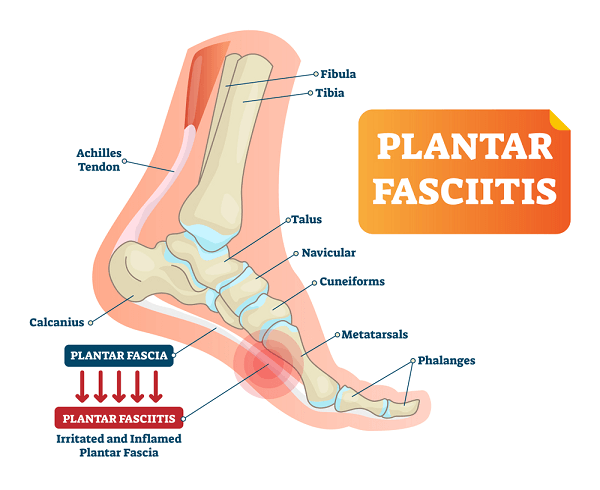
The majority of the time, the fascia becomes injured simply as a result of walking or being active while having a certain foot structure. People with flat feet commonly get this condition because the foot becomes strained with every step when flat. The resulting strain over many years results in eventual microscopic damage and inflammation to the plantar fascia, which stretches as the foot flattens. This is accelerated when some minimal injury occurs, like stepping off a curb or onto a ladder awkwardly.
After awhile, the inflammation can become significant enough that pain is actually felt. People with high arches can develop plantar fasciitis, but for a different reason. High arches do not flatten much with walking and standing. Unfortunately, some level of flattening is needed to effectively absorb shock when walking. Since high arched feet do not absorb shock well, the tissues on the bottom of the foot and heel take the brunt of the pressure of the foot pressing actively on the ground with the weight of the body behind it. This shock eventually irritates the plantar fascia, either at the point it begins from the heel bone, or somewhere in the middle of the arch.
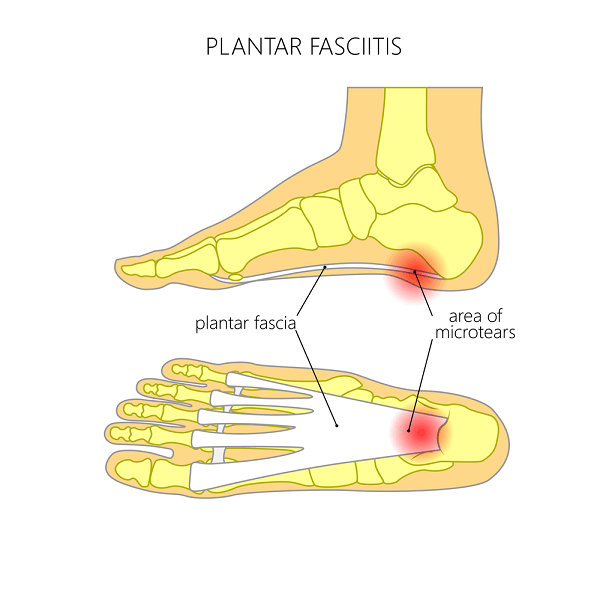
Plantar fasciitis can also develop when one damages it directly in an injury. One can injure their plantar fascia by either stepping on a protruding object that bruises the heel or arch (like a root, stone, high door threshold, toy, or other hard object), or by directly straining the tissue after excessive use of a ladder or shallow stairs. Injuries that force the foot upward suddenly can strain the fascia, and can even cause the fascia to rupture or tear across its width.
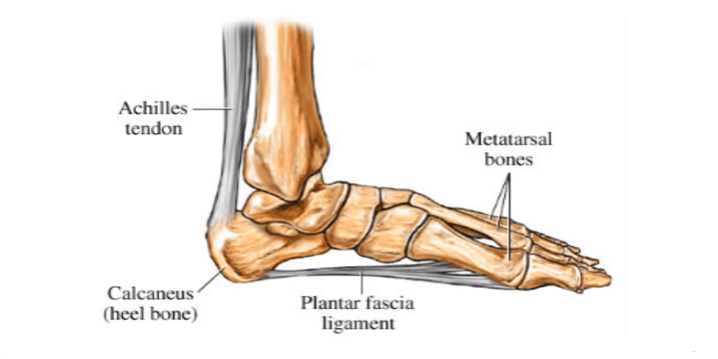
Plantar fasciitis can have several different symptoms depending on the individual, but most commonly is felt as heel or arch pain that begins as soon as one arises from bed or from a seated position.
For more info- Why Do My Feet Hurt In The Morning?
After a few steps or a few minutes, the pain begins to decrease but eventually returns as activity increases. It rarely ever hurts when one is at rest for awhile, and does not wake people up with pain in the middle of the night. The pain can feel sharp, stabbing, throbbing, or simply aching. Burning or tingling pain usually indicates involvement of nerves that are positioned near the fascia, or an entirely different condition (such as tarsal tunnel syndrome or lower back nerve problems).
Plantar fasciitis pain is usually worse when one is barefoot or in a less supportive shoe. It is rare for one to be able to see actual swelling or bruising at the heel or arch, and when these are present this usually indicates a fascia rupture or tear.
Check here for information on plantar fasciitis.
2. Bursitis and Bruises
Direct injuries to the bottom of the heel can produce pain that is independent of the fascia. The bottom of the heel contains a small network of nerves, as well as fat padding. A small pillow of tissue can also be found in this area, and is known as the subcalcaneal bursa.

This pad of tissue, or bursal sac, is part of a system of little shock absorbers that protect prominent bone tissue throughout the body. Direct injury to the heel tissue, such as when one steps on a rock or other hard object, can result in inflammation to the bursa (bursitis), or simply may cause a bruise to form. The plantar fascia (see above) can become injured with this tissue, or the bursitis and bruise can form independently.
The result is the sensation of sharp pain or strong aching when direct pressure is applied to the heel, particularly when it strikes the ground during walking. Pain is rarely present when one is at rest, and generally the pain stays in the direct undersurface of the heel without extending to the arch or ankle.
3. Tarsal Tunnel Syndrome
The tarsal tunnel is a passageway on the inner side of the ankle (the side of the big toe) where a big bundle of blood vessels and a large nerve passes through. It is surrounded by firm fibrous tissue that can pinch, or create abnormal pressure, on the tissue within it. In particular, the nerve that runs within it, called the posterior tibial nerve, can become irritated.

A similar nerve irritation occurs in the wrist in the more commonly known carpal tunnel syndrome. The posterior tibial nerve allows for sensation to the entire bottom of the foot, as well as the inner side of the foot and heel. It can be sensitive to irritation from either a narrowing of the tarsal tunnel through injury or chronic stress (such as seen in people with flat feet), or by cysts, varicose vein branches, or other small masses that physically push on the nerve.
When this nerve is irritated by tissue impinging on it in the tarsal tunnel, the result can be abnormal nerve function. In particular, the bottom of the foot and the heel can feel numb, or there can be a sharp, burning, or tingling pain present. Much of the pain is felt directly on the inner side of the heel. However, early tarsal tunnel syndrome can feel strictly as if the pain is in the bottom of the heel. This is due to referred pain, or pain that is sensed at the end of the nerve but is generated or referred from the point where the nerve is actually irritated, which is closer to the ankle.
The pain is felt more with activity, like in plantar fasciitis. However, unlike fasciitis, the problem is not limited to the arch, and the pain can remain in the foot even during rest if the tarsal tunnel is irritated enough. In addition to the nerve in the tarsal tunnel itself, there are several branches of this nerve that come off of it before and after the tarsal tunnel that can cause similar symptoms if they are inflamed by injury or foot strain from abnormal foot structure.
4. Other Causes
There are numerous other causes for pain on the bottom of the heel besides plantar fasciitis, tarsal tunnel syndrome, and bursitis. These causes are far less common than the others combined, but do develop from time to time. Heel pain can develop as a result of a stress fracture to the heel bone (calcaneus). Repetitive injuries to the bottom of the heel, such as when one must walk on a rocky surface or must constantly jump off of platforms, can create eventual microtrauma in the calcaneus that can lead to a fracture within the bone substance itself. Stress fractures take a while to develop, and can result in chronic, aching heel pain that can progress to sharper pain as the fracture continues to worsen. Conditions of the nerves in the leg and lower back can create phantom pain that is felt in the foot and heel.
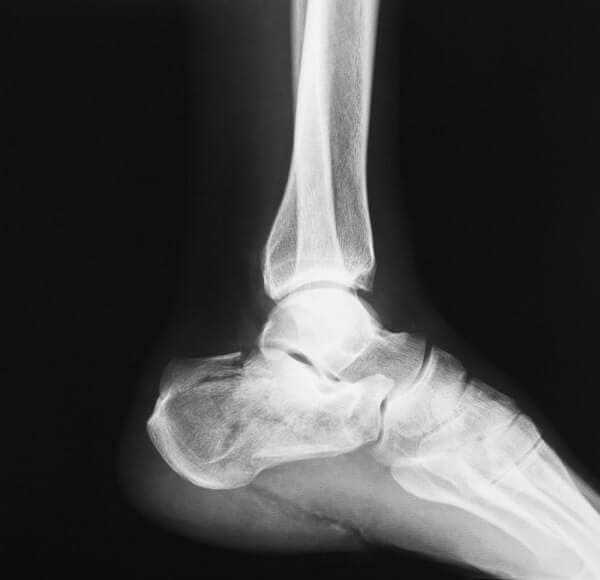
The most common amongst these conditions is lower back arthritis, which can result in pinching of one of the spinal nerve branches as they head towards the legs. A slipped disk in the lower lumbar part of the spine can produce the same effect. This nerve pinching can create pain that either shoots down the leg or is felt to start in the foot or heel itself. This pain is typically worsened when one is seated for an extended period (such as during a long car trip or at a desk at work), or when one is lying in bed. Other diseases can create abnormalities in how the nerves actually function, and phantom pain simply develops at random times in these conditions.
Diabetes is the most common cause of this type of pain, although it is more common for both feet to be painful rather than just one. The heel can also hurt as a result of the inflammation associated with a body-wide arthritic condition like rheumatoid arthritis, or fibromyalgia, and certain diseases involving mineral deficiencies can also have heel pain as part of their symptoms. Finally, tumors and masses, both benign and cancerous, can cause pain to be felt in the heel region either by simply being located in the heel or causing pressure against a nerve that produces heel sensation.


